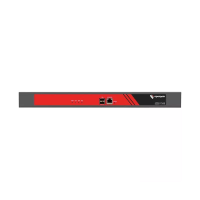Chapter 3: Serial Port, Device and User Configuration
32
<username>:<port label>
<username>:<ttySX>
<username>:<serial>
For a user named chris to access serial port 2, when setting up the SSHTerm or the PuTTY
SSH client, instead of typing username = chris and ssh port = 3002, the alternate is to type
username = chris:port02 (or username = chris:ttyS1) and ssh port = 22.
Or by typing username=chris:serial and ssh port = 22, the user is presented with a port selection
option:
This syntax enables users to set up SSH tunnels to all serial ports with a single IP port 22
having to be opened in their firewall/gateway
NOTE In console server mode, you connect to a serial port via pmshell. To generate a BREAK on the
serial port, type the character sequence ~b. If you’re doing this over OpenSSH, type ~~b.
TCP RAW TCP allows connections to a TCP socket. While communications programs like PuTTY
also support RAW TCP, this protocol is usually used by a custom application
For RAW TCP, the default port address is IP Address _ Port (4000 + serial port #) i.e. 4001 –
4048
RAW TCP also enables the serial port to be tunneled to a remote console server, so two serial
port devices can transparently interconnect over a network (see Chapter 3.1.6 – Serial
Bridging)
RFC2217 Selecting RFC2217 enables serial port redirection on that port. For RFC2217, the default port
address is IP Address _ Port (5000 + serial port #) i.e. 5001 – 5048
Special client software is available for Windows UNIX and Linux that supports RFC2217 virtual
com ports, so a remote host can monitor and manage remote serially attached devices as
though they are connected to the local serial port (see Chapter 3.6 – Serial Port Redirection for
details)
RFC2217 also enables the serial port to be tunneled to a remote console server, so two serial
port devices can transparently interconnect over a network (see Chapter 3.1.6 – Serial
Bridging)
Unauthenticated Telnet This enables Telnet access to the serial port without authentication credentials.
When a user accesses the console server to Telnet to a serial port, they are given a login
prompt. With unauthenticated Telnet, they connect directly through to the port without any
console server login challenge. If a Telnet client does prompt for authentication, any entered
data allows connection.

